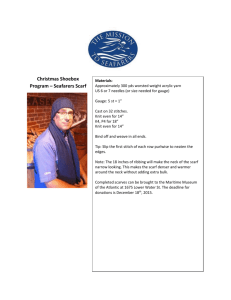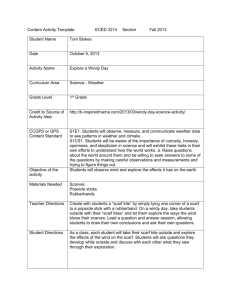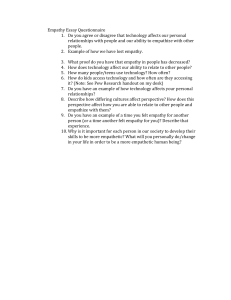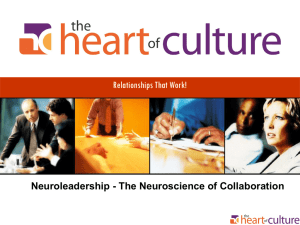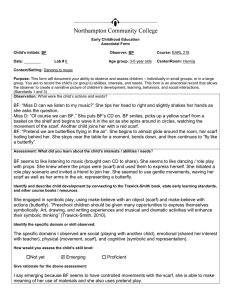SCARF model1
advertisement
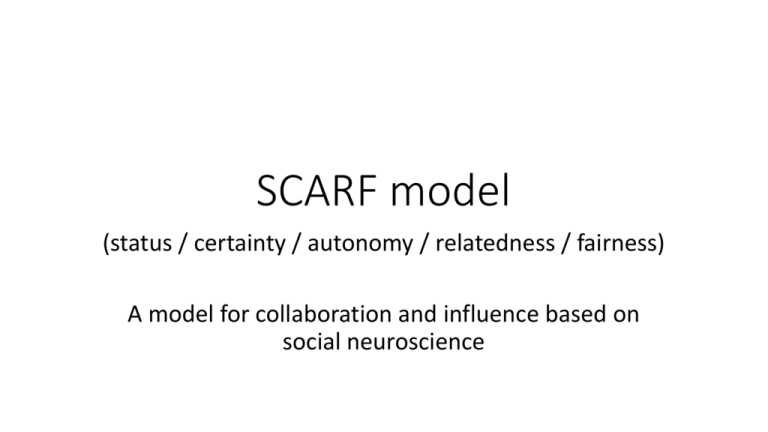
SCARF model (status / certainty / autonomy / relatedness / fairness) A model for collaboration and influence based on social neuroscience Do this first . . http://www.scarfsolutions.com/selfassessment.aspx The number one issue for your brain is Minimise danger and maximise reward. The brain constantly scans incoming information and asks . . . Is it dangerous / bad ? (AVOID) Is it safe / good ? (APPROACH) This has been going on a long time . . . Your brain is a very old design Old to new • Reptilian brain • (400million years old) • Fight or flight centre • Limbic brain • (250 million years old) • Hunger, thirst, sex, sleep, blood pressure, temperature • Neocortex • (500,000 years old) • Self control, consciousness, awareness, language The approach – avoid response is deep in your brain • Modern implications of this are • First impressions are important • Decisions are made before we know it • Fear reduces brain functioning Connecting to the SCARF model • Evidence suggests that the same parts of the brain are used for • Approach Avoid decisions (survival) • People interactions / experience (social) • This means our social and work life is based n the idea of maximising rewards and minimising danger. Connecting to the SCARF model The SCARF model identifies common factors that activate a threat or reward response in social situations. The self assessment quiz shows which of these you may be most affected by in your social interactions. IMPLICATIONS IN WORKPLACE SCARF MODEL THREAT (AVOID) REWARD (APPROACH) STATUS Giving advice, instructions, offering feedback Beating your ‘personal best’ / receiving positive feedback CERTAINTY Not knowing what the boss expects / people acting in ‘unusual’ ways Having clear objectives for projects / breaking work into small units AUTONOMY Being micro managed Allowing people to organise own hours (glidetime), workload etc RELATEDNESS Meeting new people / people from different cultures Setting up mentoring or coaching at work / having a friend at work FAIRNESS Lack of ground rules / expectations /etc Transparency / doing volunteer work Empathy – or ‘how to make people like you’. • The empathy arc describes a conversational technique to quickly connect to a new person. • Based on and influenced by the SCARF model Emotions / Feelings Meaning Stories Affirmation The empathy arc Thanks / Goodbye Hello / Rapport How to do it EMPATHY ARC SCRIPT HELLO “Hello / how are you “ STORIES “Tell me about a time when . . “ EMOTIONS “How did you feel about that / when that was happening . . ?” MEANING “I guess that must have meant a lot to you . . ? AFFIRMATION “That’s a really interesting story . . “ THANKS “thanks for sharing that with me . . .” Connections Empathy Arc - SCARF • The empathy arc technique can quickly • • • • • Establish a high relatedness(R) feeling, Gives status(S) to the speaker (all about them), The highly structured conversation gives some certainty (C) By asking questions and listening we transfer autonomy to the speaker(A) Fairness can be increased by “I am going to ask a few questions - is that ok?” • Use empathy arc to increase Approach response
